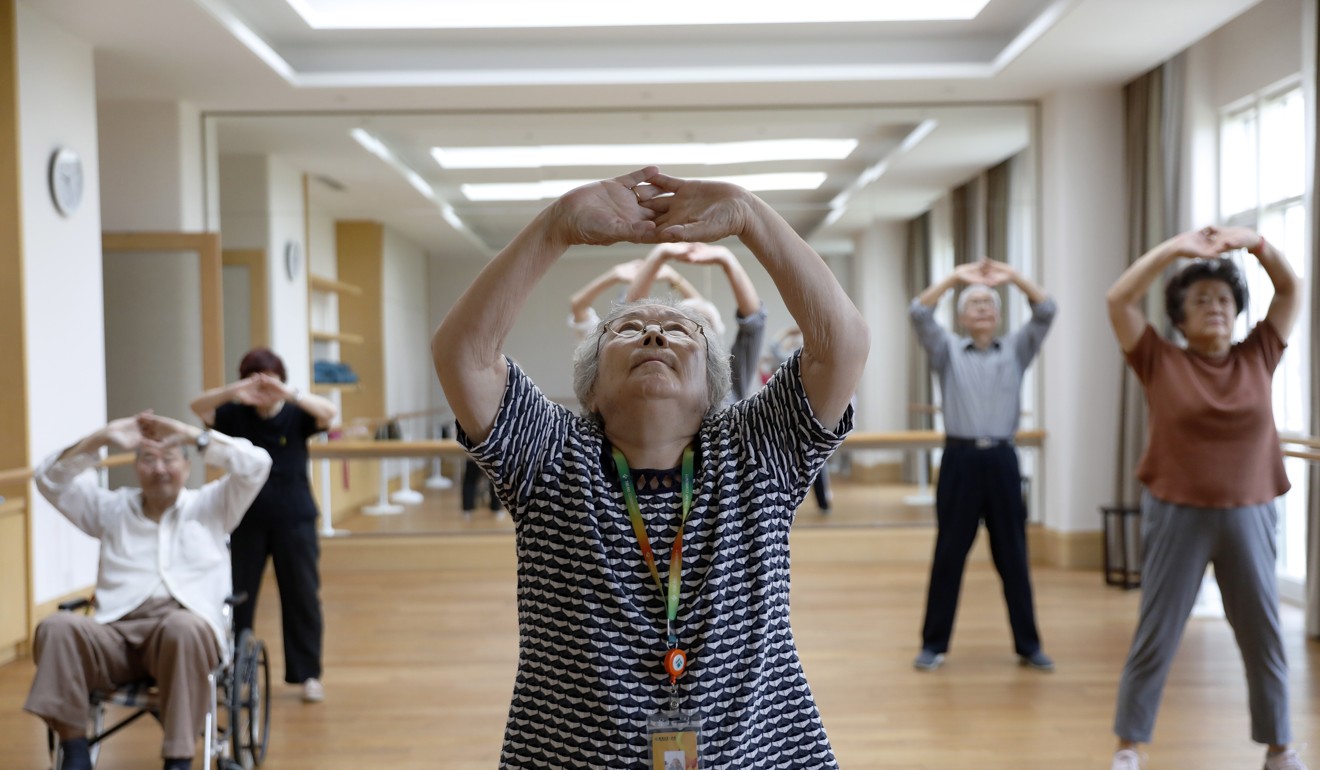
China’s ageing population prompts plan to deal with looming silver shock
- Five-point strategy unveiled in first policy paper aimed at the most daunting social and political challenge of coming decades
- Estimates say over-60s will make up one third of the population by 2050
The paper, jointly issued by the Communist Party’s Central Committee and the State Council, acknowledged that the country faced a serious ageing problem but said China must “find its own way out, and that means taking a path with Chinese characteristics”.
The document does not give a specific estimate of China’s elderly population but China’s National Community on Ageing has estimated that, by 2050, those aged over 60 could reach 487 million, about one third of the population.
According to the paper, which was published by official news agency Xinhua on Thursday, Beijing is calling for an active response to the ageing problem with short-term, medium-term and long-term goals, to be achieved by 2022, 2035 and 2050 respectively.
For China’s elderly singles looking for love, it’s complicated
Specifically, the paper said China should deal with the ageing problem through increased social investment and input, building a high quality workforce, better health care and retirement services, use of advanced and innovative technologies, and enhanced legal and social protections.
Lu Jiehua, a demographics professor and expert for the National Development and Reform Commission, told Beijing News that possible measures included building a bigger pension pool by investing in lower risk but secure projects, strengthening the quality of the Chinese workforce, and growing the “silver hair” industry.

Demographers have warned that direct consequences of China’s ageing population include a shrinking workforce and a weakening of the country’s economic strength.
Yi Fuxian, a researcher on China’s ageing population at the University of Wisconsin-Madison in the US, noted that the demographic shift could undermine China’s ability to compete with the US in the long term.
“In the past it has been a young China catching up with a middle-aged US, that’s why [China] has managed to close the gap between the two countries rather quickly. Now it’s going to be an old China trying to chase a middle-aged US, and the gap [between the two countries] is likely to get wider and wider. China’s ageing population can become an obstacle for the country trying to overtake the US,” he said.
China’s state pension fund to run dry by 2035 due to one-child policy
The one-child policy has also exacerbated the ageing problem with a declining fertility rate. The government abandoned the policy in 2016 to allow couples to have two children, but so far the change has proven ineffective in boosting the birth rate.
In January, the National Bureau of Statistics said the total number of births fell to 15.2 million in 2018 – or 1.6 children per woman – a drop of nearly 12 per cent nationally compared with the previous year, a number which is disputed by demographers like Yi.
He claims the Chinese government has misrepresented the actual birth rate to gloss over the ramifications of the one-child policy. According to his own calculations, the actual fertility rate averaged 1.18 children per woman between 2010 and 2018, a lower level than Japan, suggesting China’s ageing problem could be more serious than its eastern neighbour’s.
Huang Wenzheng, a senior researcher at the Beijing-based think tank, Centre for China and Globalisation, said the low fertility rate was China’s biggest challenge.
“Of course, there are many things you can do to remedy an ageing population, but to solve it at the root, there need to be [more] newborns. It is ridiculous to talk about ageing when birth control has not been entirely scrapped,” he said.
Huang, however, questioned how soon major policy changes would occur if the government had not yet fully recognised the gravity of the issue.
Liang Zhongtang, a demographer from the Shanghai Academy of Social Sciences, said it would be difficult to resolve the challenges solely by relying on government edicts and planning, as critical services such as homes for the elderly and medical services, as well as new and innovative technologies, could only take off with the support of market forces.
“Developed countries do not do these things because of government planning,” Liang said. “They rely on the market to resolve their ageing crises, and we are not doing enough in this regard.”

.jpg?itok=H5_PTCSf&v=1700020945)